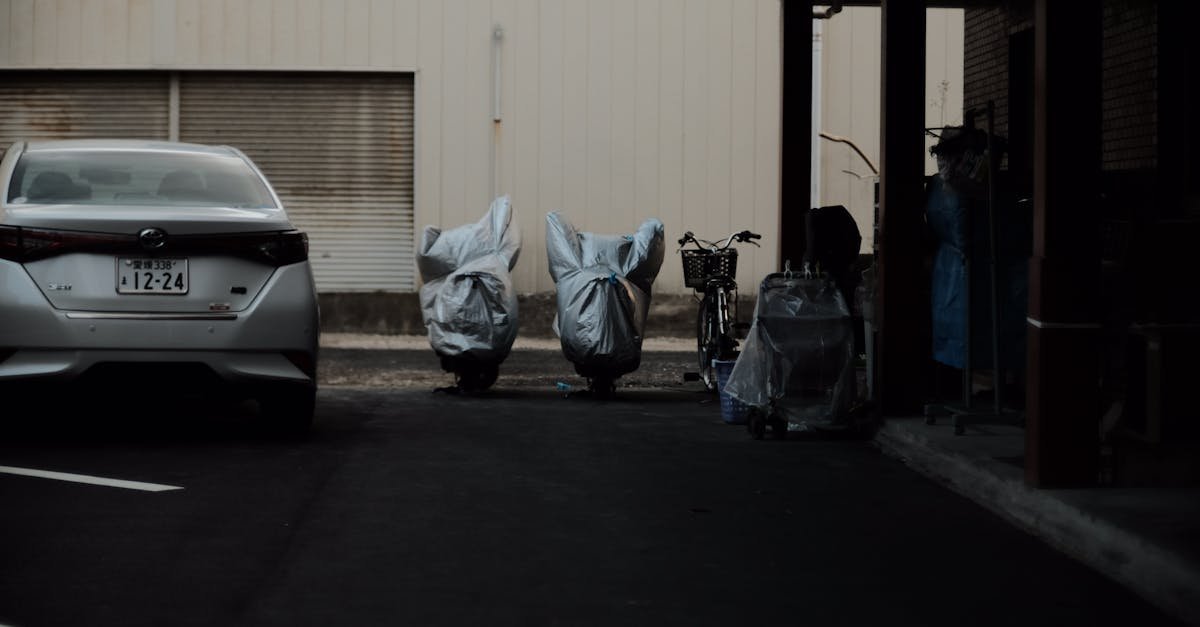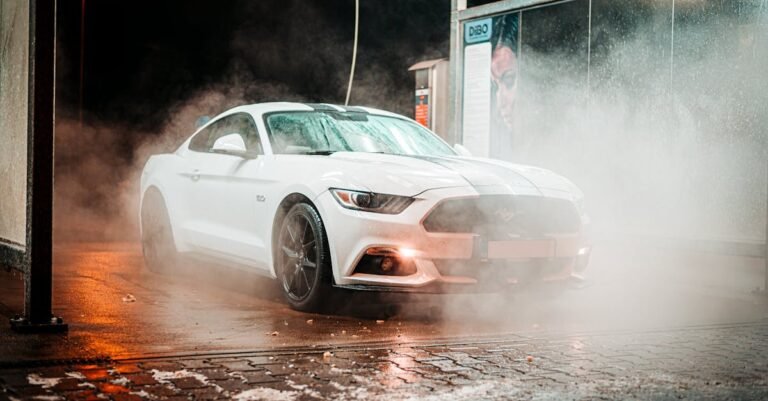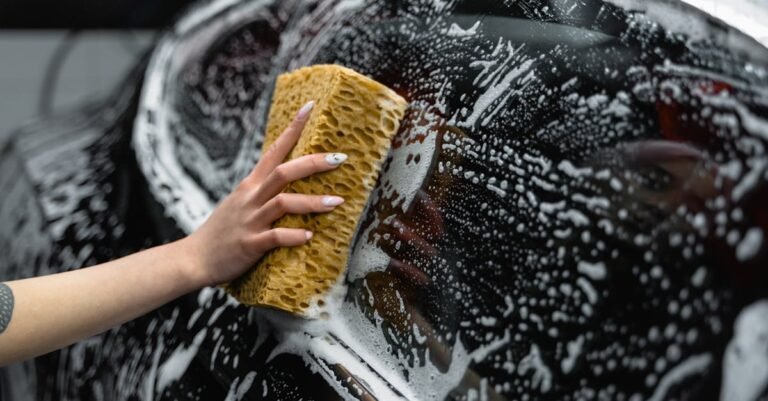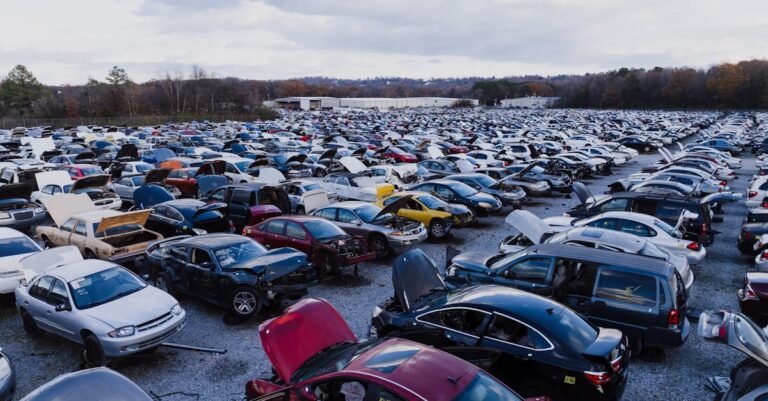**Table of Contents**
- Protect Car Paint: Simple Methods to Keep Your Ride Gleaming
- Why Bother Protecting Your Car’s Paint Anyway?
- The Foundation: Proper Washing Techniques
- Adding Layers of Protection: Waxing and Sealants
- Stepping Up Your Game: Ceramic Coatings and PPF
- Everyday Habits for Paint Preservation
- Conclusion: Keeping Your Paint Pristine is Achievable
- Frequently Asked Questions (FAQs)
Protect Car Paint: Simple Methods to Keep Your Ride Gleaming
Let’s be honest, that feeling when your car is freshly cleaned, gleaming under the sun, reflecting the world like a mirror? It’s pretty awesome. But keeping that showroom shine isn’t just about vanity; it’s about protecting your investment. Your car’s paint is its first line of defense against rust, corrosion, and the general wear and tear of daily life. Think of it like skin – it needs care and protection to stay healthy and look its best. Ignoring it can lead to dullness, scratches, and eventually, costly repairs. So, how do you protect car paint without breaking the bank or spending every weekend detailing? Don’t worry, it’s easier than you think! We’re going to dive into some simple, yet highly effective methods to keep your car looking fantastic for years to come.
Why Bother Protecting Your Car’s Paint Anyway?
You might be thinking, “It’s just paint, right? What’s the big deal?” Well, it’s a bit more complex than that. Protecting your car’s paint goes way beyond just aesthetics, though looking good is definitely a perk!
More Than Just Looks: The Real Value
First off, maintaining your car’s paint significantly impacts its resale value. When it comes time to sell or trade in your vehicle, a car with pristine, well cared for paint will always command a higher price than one that’s dull, scratched, or showing signs of oxidation. Potential buyers see good paint as an indicator that the car has been generally well maintained. It creates a positive first impression that’s hard to shake. Beyond resale value, protecting the paint prevents more serious issues down the line. That clear coat isn’t just for shine; it’s a barrier protecting the color coat and the metal underneath from moisture and oxygen, the key ingredients for rust. Once rust starts, it can spread like a disease, leading to expensive bodywork.
Battling the Elements and Everyday Enemies
Your car’s paint is constantly under attack. Seriously! Think about what it faces daily:
- Sunlight (UV Rays): Just like sunlight can burn your skin, UV rays break down the chemical bonds in your car’s paint, leading to fading, oxidation (that chalky appearance), and eventual clear coat failure.
- Rain (Especially Acid Rain): Rainwater isn’t pure H2O. It picks up pollutants from the atmosphere, creating acid rain that can etch into your paint finish when the water evaporates, leaving permanent marks.
- Bird Droppings: These aren’t just unsightly; they’re highly acidic and can start eating into your paint within hours if left untreated.
- Bug Splatter: Similar to bird droppings, the guts of insects contain acids that can etch your paint, especially when baked on by the sun.
- Tree Sap: Sticky and stubborn, tree sap can bond strongly to your paint and be difficult to remove without causing damage. It can also stain the paint.
- Road Grime and Tar: Dirt, salt (in winter), tar, and other debris kicked up from the road act like sandpaper, scratching and abrading the paint surface.
- Automatic Car Washes (Sometimes): While convenient, some automatic washes use harsh chemicals or abrasive brushes that can create fine scratches (swirl marks) over time.
Protecting your paint means putting up a barrier against these relentless attackers.
The Foundation: Proper Washing Techniques
Okay, so we know why we need to protect the paint. Now, let’s talk about the how. The absolute cornerstone of paint protection is proper washing. Doing it wrong can actually cause more harm than good!
The Two Bucket Method: Your First Line of Defense
Forget the single bucket and sponge your grandpa used. The biggest cause of swirl marks and fine scratches during washing is dragging dirt across the paint. The two bucket method is designed specifically to prevent this.
What You’ll Need
- Two Buckets (Clearly!): Label one “Wash” and the other “Rinse.”
- Grit Guards: These plastic grids sit at the bottom of each bucket. They trap dirt that comes off your wash mitt, preventing you from picking it back up and rubbing it onto the paint. Essential!
- Quality Car Wash Soap: pH neutral soap specifically designed for cars.
- Microfiber Wash Mitt(s): Much gentler than sponges, which can trap dirt particles. Have a separate one for wheels if possible.
- Hose with Nozzle: For rinsing.
- Microfiber Drying Towels: We’ll get to these.
The Process Explained
It sounds simple, and it is:
- Fill both buckets with water. Add the appropriate amount of car wash soap to the “Wash” bucket only. Place grit guards in both.
- Thoroughly rinse the entire car with the hose first. This removes loose dirt and debris before you even touch the paint. Work from top to bottom.
- Dunk your wash mitt into the “Wash” bucket, loading it up with soapy water.
- Wash a small section of the car (e.g., half the roof, one door panel), using gentle, straight line motions. Avoid circular scrubbing.
- Before putting the mitt back into the soapy “Wash” bucket, dunk it thoroughly into the “Rinse” bucket. Agitate it against the grit guard to release trapped dirt.
- Now, put the clean mitt back into the “Wash” bucket to get more suds.
- Repeat steps 4 6, working your way around the car, always going from top to bottom (roof, windows, hood/trunk, upper sides, lower sides). Wash wheels and tires last with a separate mitt if possible.
- Rinse the car frequently as you go, especially in direct sunlight, to prevent soap from drying on the paint.
- Perform a final, thorough rinse once the entire car is washed.
See? The rinse bucket ensures you’re always applying relatively clean, soapy water to the paint, minimizing the risk of scratches.
Choosing the Right Soap: Don’t Use Dish Soap!
This is a big one! Please, please, please do not use dish soap (like Dawn or Fairy) to wash your car. Yes, it cuts grease fantastically on your plates, but it does the same thing to your car’s paint. Dish soaps contain harsh detergents and degreasers that strip away any wax or sealant protection you might have applied. They can dry out the paint and plastic trim over time, accelerating fading and wear. Always use a dedicated, pH neutral car wash soap. These are formulated to gently lift dirt and grime without removing protective layers or harming the paint finish.
Drying Done Right: Avoiding Swirl Marks
You’ve washed carefully, now don’t ruin it at the drying stage! Using old bath towels or chamois leathers (real or synthetic) can inflict scratches just as easily as improper washing. Why? Because any tiny piece of dirt missed during washing gets trapped and dragged across the surface.
The best method is to use high quality, plush microfiber drying towels. Microfiber is incredibly absorbent and its structure lifts any residual water and tiny dirt particles away from the surface, trapping them deep within the fibers rather than dragging them across the paint. Here’s how:
- Pat or Blot Drying: Gently lay the microfiber towel flat on a panel and pat it dry, or carefully drag it in one direction without applying pressure. Avoid vigorous rubbing or circular motions.
- Use Multiple Towels: Have several clean drying towels on hand. Once one becomes saturated, switch to a fresh one.
- Consider a Leaf Blower (Optional): For a truly touchless drying experience, you can use an electric leaf blower (not a gas one, due to exhaust fumes) to blow most of the water off the car, especially from crevices, mirrors, and grills where water tends to drip later. Follow up with a microfiber towel for any remaining spots.
Adding Layers of Protection: Waxing and Sealants
Washing removes the bad stuff, but applying protection adds a sacrificial barrier between your paint and those environmental enemies we talked about. Think of it like sunscreen for your car. Wax and sealants are the most common and accessible forms of paint protection.
Wax On, Wax Off: The Classic Shine
Car wax is the traditional go to for paint protection and achieving that deep, wet look shine. It fills in microscopic imperfections in the clear coat, creating a smoother surface that reflects light better and makes water bead up beautifully (hydrophobicity).
Carnauba vs. Synthetic Waxes
You’ll mainly find two types:
- Carnauba Wax: Derived from the leaves of a Brazilian palm tree, carnauba is prized for the warm, deep glow it imparts, especially on darker colors. It’s the choice of many enthusiasts for pure aesthetics. However, natural carnauba waxes typically don’t last as long as synthetics – maybe 4 to 8 weeks depending on conditions. They come in paste, liquid, and spray forms.
- Synthetic Wax (Paint Sealants): These are man made polymers engineered for durability and ease of application. They form a stronger chemical bond with the paint surface, offering longer protection – often 3 to 6 months, sometimes even longer. While they might not offer the exact same depth as carnauba for some purists, modern synthetics provide excellent shine, slickness, and superior longevity. Many “waxes” on the shelf today are actually synthetic sealants or hybrids combining carnauba and polymers.
How Often Should You Wax?
This depends on the type of wax/sealant used, your climate, whether your car is garaged, and how often you wash it. A good rule of thumb is every 2 3 months for a synthetic sealant or hybrid wax, and perhaps more frequently (every 4 8 weeks) for a pure carnauba wax. A simple test: after washing, spray some water on a horizontal panel like the hood. If the water forms tight, round beads that roll off easily, your protection is likely still working. If the water sheets off slowly or forms large, flat puddles, it’s probably time to reapply.
Paint Sealants: Longer Lasting Guardians
As mentioned, synthetic paint sealants are essentially engineered waxes designed for maximum durability. They create a slick, protective polymer layer that bonds tightly to your car’s clear coat. This offers superior resistance to UV rays, acid rain, bird droppings, and other contaminants compared to traditional carnauba waxes. They are typically very easy to apply – often just wipe on, let haze, wipe off. While they might last 3 6 months or more, they provide fantastic protection and make washing easier as dirt doesn’t stick as readily to the slick surface.
Stepping Up Your Game: Ceramic Coatings and PPF
If you want even longer lasting and more robust protection than traditional waxes or sealants, you can explore ceramic coatings and paint protection film (PPF).
Ceramic Coatings: The Glossy Hard Shell
Ceramic coatings (often based on Silicon Dioxide, SiO2) represent a major leap in paint protection technology. Instead of just sitting on the surface like wax, a ceramic coating forms a semi permanent, chemical bond with your car’s clear coat, creating an incredibly hard, hydrophobic, and glossy layer. Think of it like adding an extra, much tougher layer of clear coat.
Benefits include:
- Extreme Durability: Professional coatings can last for years (2, 5, even 7+ years) with proper maintenance, not months like waxes/sealants.
- Superior Chemical Resistance: Highly resistant to bird droppings, bug guts, tree sap, and acid rain etching.
- Enhanced Gloss: Creates a deep, candy like shine.
- Easier Cleaning: The super slick surface means dirt and grime have a hard time sticking, making washing much easier.
- UV Protection: Helps prevent paint oxidation and fading.
Downsides? They require meticulous paint preparation (decontamination and often paint correction/polishing) before application. Professional application is recommended for the best results and longevity, which can be costly upfront. DIY ceramic coating kits are available, but require careful application in a controlled environment.
Paint Protection Film (PPF): The Invisible Shield
Paint Protection Film, sometimes called “clear bra,” is a thick, transparent urethane film applied directly to the car’s paintwork. Its primary purpose is to protect against physical impacts: rock chips, scratches, scuffs, and minor abrasions. Think of it as a screen protector for your car’s paint.
Benefits include:
- Unmatched Impact Resistance: The best defense against rock chips and deeper scratches that waxes or coatings can’t stop.
- Self Healing Properties: Many modern PPFs have a top coat that can “heal” minor scratches and swirl marks with exposure to heat (like the sun or a heat gun).
- UV Protection: Contains UV inhibitors to prevent paint fading underneath.
- Clarity: High quality films are virtually invisible once applied correctly.
Downsides? PPF is the most expensive paint protection option, especially for full vehicle coverage. Professional installation is highly recommended for a seamless look. While durable, the film itself can potentially yellow or degrade over many years, though technology is constantly improving.
Often, people combine methods: applying PPF to high impact areas (front bumper, hood, mirrors) and then ceramic coating the entire car (including over the PPF) for maximum protection and ease of cleaning.
Everyday Habits for Paint Preservation
Beyond washing and applying protection, simple daily habits can make a huge difference in preserving your car’s paint.
Parking Smart: Avoiding Environmental Hazards
Where you park your car matters. Whenever possible:
- Choose Covered Parking: A garage or carport is your paint’s best friend, protecting it from sun, rain, snow, bird droppings, and tree sap.
- Avoid Parking Under Trees: Trees drop sap, pollen, leaves, twigs, and provide convenient perches for birds.
- Be Mindful of Sprinklers: Lawn sprinklers often use hard water, which can leave stubborn mineral spots on your paint if allowed to dry.
- Seek Shade (but be cautious): While parking in shade protects from UV rays, ensure it’s not under a hazard like a sap dripping tree or a flock of birds’ favorite spot.
Dealing with Bird Droppings and Bug Splatter ASAP
We mentioned how acidic these are. Time is of the essence! Don’t let bird bombs or bug guts bake onto your paint in the sun.
- Keep a Quick Detailer Spray and Microfiber Towels in Your Car: A quick detailer lubricates the surface, allowing you to safely lift off fresh contaminants without scratching. Spray generously, let it dwell for a few seconds to soften the mess, and gently wipe away with a clean microfiber towel. Fold the towel frequently to use a clean section.
- For Dried On Messes: If it’s already dried, soak a microfiber towel in quick detailer or car wash solution and let it sit on the spot for a few minutes to rehydrate and loosen it before attempting to wipe. Never scrub forcefully at dried on contaminants.
Acting quickly prevents the acids from etching into your clear coat, saving you from potential permanent damage.
Conclusion: Keeping Your Paint Pristine is Achievable
Protecting your car’s paint doesn’t have to be an overwhelming chore. By incorporating simple habits like proper washing with the two bucket method, choosing the right soap, drying carefully, and applying a layer of protection like wax or sealant every few months, you can significantly extend the life and beauty of your paintwork. Remember, consistency is key. A little regular care goes a long way in battling the elements and everyday hazards.
Whether you stick to the basics of washing and waxing, or decide to invest in longer term solutions like ceramic coatings or PPF, you’re making a smart choice. You’re not just keeping your car looking great; you’re protecting its value and preventing costly future repairs. So go ahead, give your car the care it deserves, and enjoy that head turning shine for years to come!
Frequently Asked Questions (FAQs)
1. How often should I wash my car to protect the paint?
Ideally, aim to wash your car every 1 2 weeks. This prevents dirt and contaminants from building up and potentially bonding to or etching the paint. If your car is exposed to harsh conditions (like road salt, frequent bird droppings, or heavy pollen), you might need to wash it more often.
2. Can I just take my car through an automatic car wash?
While convenient, many automatic car washes, especially those with spinning brushes, can cause microscopic scratches (swirl marks) over time. Touchless automatic washes are generally safer, but might use harsher chemicals to compensate for the lack of physical contact. For the best paint protection, hand washing using the two bucket method is always recommended.
3. What’s the difference between polishing and waxing?
Polishing is an abrasive process designed to remove imperfections from the paint, like swirl marks, light scratches, and oxidation, by leveling the clear coat. Waxing (or applying a sealant/coating) is about adding a protective layer on top of the paint to shield it from the elements and enhance shine. You typically polish first (if needed) and then apply wax or sealant.
4. Do new cars need paint protection?
Absolutely! New car paint is just as susceptible to damage as older paint. Applying protection like a wax, sealant, ceramic coating, or PPF right from the start is the best way to preserve that factory finish and keep it looking new for longer. Dealerships often offer paint protection packages, but they can be overpriced; you can often get better results and value from a professional detailer or by doing it yourself.
5. My car paint already has scratches and swirl marks. Can these methods still help?
Yes! While these methods primarily focus on preventing future damage, proper washing techniques will stop you from inflicting more scratches. Applying wax or sealant can temporarily fill in very light swirls, improving the appearance. For existing scratches and more noticeable swirl marks, you’ll likely need paint correction (polishing) before applying protection to get the best results. However, protecting the paint you have, even if imperfect, is still crucial to prevent further degradation like fading or rust.









